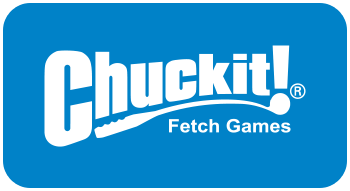You have no items in your shopping cart.

- Home /
- Blog
How to Choose the Right Solarium Tanning Bed for Your Salon or Home Use
In recent years, the demand for Solarium Tanning Beds has surged, reflecting a growing interest in indoor tanning solutions that offer convenience and quality. According to a report by IBISWorld, the tanning salon industry in the U.S. generated approximately $2.3 billion in revenue in 2023, with a notable percentage attributed to in-home tanning equipment. Additionally, a survey by the Indoor Tanning Association indicated that more consumers are turning to Solarium Tanning Beds for their affordability and versatility, as these beds cater to a variety of skin types and tanning preferences. As a salon owner or a homeowner looking to enhance your tanning experience, it's essential to choose the right Solarium Tanning Bed that not only meets regulatory safety standards but also aligns with your specific needs and usage patterns. This guide will provide you with crucial tips to navigate the selection process effectively.
Factors to Consider When Choosing a Tanning Bed: Performance and Skin Type
When selecting the ideal solarium tanning bed for your salon or personal use, understanding the interplay between performance and skin type is crucial. According to the International Agency for Research on Cancer (IARC), different skin types react distinctly to UV exposure, making it essential to match the tanning bed's capabilities with the specific needs of your clientele or yourself. For instance, a salon catering to a clientele with predominantly fair skin types may benefit from beds that offer more controlled, lower-intensity UV output to minimize the risk of burns while still achieving desired tanning results.
Tips: Always consider investing in tanning beds with adjustable settings. These allow users to tailor their tanning experience to their skin type, ensuring safer tanning sessions. Additionally, look for beds equipped with features such as facial tanners and adjustable timers, which can enhance the tanning experience for diverse skin types.
Moreover, performance factors such as the bed’s UV output and lamp efficiency are significant. Effective tanning beds typically use high-pressure lamps that emit UVB and UVA rays in a balanced ratio, promoting optimal melanin production while taking skin type variability into account. Research from the American Academy of Dermatology suggests that clients with medium skin types may require longer exposure times than those with darker skin, who may achieve results more quickly but still need to monitor their sessions to avoid overexposure.
Understanding Tanning Bed Technologies: UVA vs. UVB and Energy Efficiency
When choosing a tanning bed, understanding the technologies behind UVA and UVB is crucial. UVA rays penetrate the skin more deeply and are primarily responsible for the tanning effect, making them essential for achieving a bronzed look. On the other hand, UVB rays play a significant role in the skin's natural production of vitamin D and can lead to a shorter tanning session, but they are also associated with a higher risk of skin damage. Therefore, a balanced tanning bed that offers a mix of both types of UV radiation can provide effective results while minimizing potential harm.
Energy efficiency is another important factor to consider when selecting a tanning bed. Modern tanning beds are designed with energy-saving technologies that reduce electricity consumption while still ensuring optimal performance. Beds equipped with high-efficiency lamps not only lower operating costs but also contribute to a more sustainable salon or home practice. By investing in a tanning bed with advanced energy-efficient features, users can enjoy the benefits of tanning while being mindful of their environmental impact.
Understanding Tanning Bed Technologies: UVA vs. UVB and Energy Efficiency
This chart represents the comparison of UVA and UVB output levels across different tanning bed types, along with their energy efficiency ratings.
Evaluating Size and Space Requirements for Home vs. Salon Use
When considering the right solarium tanning bed for either your salon or home use, evaluating the size and space requirements is crucial. For salons, where high client turnover is expected, opting for larger tanning beds can accommodate more customers at once. These beds usually come with broader dimensions and enhanced features, creating a more comfortable experience for users. Ensure that your salon space allows for adequate room not just for the equipment, but also for client movement and privacy.
For home use, the available space often dictates the choice. Compact models are designed to fit in smaller areas while still providing effective tanning. When setting up a home tanning bed, consider the dimensions of your room and how the bed will fit within your decor and functionality.
**Tips:**
1. Measure your space accurately before purchasing to avoid any post-purchase issues.
2. Look for models with adjustable features that can enhance both comfort and effectiveness, regardless of your space limitations.
How to Choose the Right Solarium Tanning Bed for Your Salon or Home Use - Evaluating Size and Space Requirements for Home vs. Salon Use
| Feature | Home Use | Salon Use |
|---|---|---|
| Size | Compact (small footprint) | Larger (more space required) |
| Power Requirements | Standard home outlet | High power outlet needed |
| User Capacity | Single user | Multiple users per hour |
| Durability | Moderate wear | High durability required |
| Maintenance | Low maintenance | Regular maintenance needed |
| Cost | Lower initial investment | Higher initial investment |
Assessing Safety Standards and Certifications in Tanning Equipment
When selecting a solarium tanning bed for either salon or home use, it is essential to prioritize safety standards and certifications. Tanning equipment must comply with specific regulatory guidelines to ensure user safety and effective tanning results. According to the American National Standards Institute (ANSI), all tanning devices should meet the criteria established in ANSI/IEST 277 which focuses on safe operational procedures and the protection of consumers from overexposure to ultraviolet (UV) radiation.
Furthermore, it is vital to look for products that are certified by reputable organizations such as the International Electrotechnical Commission (IEC) or the Food and Drug Administration (FDA) in the United States. The FDA has indicated that misuse of tanning devices can lead to skin damage and significantly increase the risk of skin cancer. Statistics show that approximately 90% of skin cancers are associated with UV radiation exposure. Hence, choosing a tanning bed with verified safety certifications not only ensures compliance with health regulations but also enhances the credibility of your salon or home tanning experience, thereby fostering customer trust and satisfaction.
Cost-Benefit Analysis: Initial Investment vs. Long-Term Profitability in Salons
When considering the purchase of a solarium tanning bed, a cost-benefit analysis is crucial for evaluating the initial investment against long-term profitability, especially for salon owners. The initial cost of a high-quality tanning bed can be significant; however, this investment can lead to substantial returns if evaluated correctly. A budget-friendly option might save money upfront but could lead to increased maintenance costs or lower customer satisfaction, impacting future earnings. Thus, selecting a bed with a reputable brand and durable features can be a wiser choice in the long run.
Moreover, beyond the initial purchase price, salon owners must assess operating costs, including maintenance, tanning bed supplies, and the energy consumption of the equipment. A more energy-efficient tanning bed may have a higher upfront cost, but the savings on utility bills can enhance overall profit margins over time. Additionally, considering factors such as customer demand, competitive pricing, and how the tanning bed fits into the broader service offerings of the salon can further influence profitability. Ultimately, integrating these considerations can help salon owners make informed decisions that align with their financial goals and enhance their competitiveness in the market.
